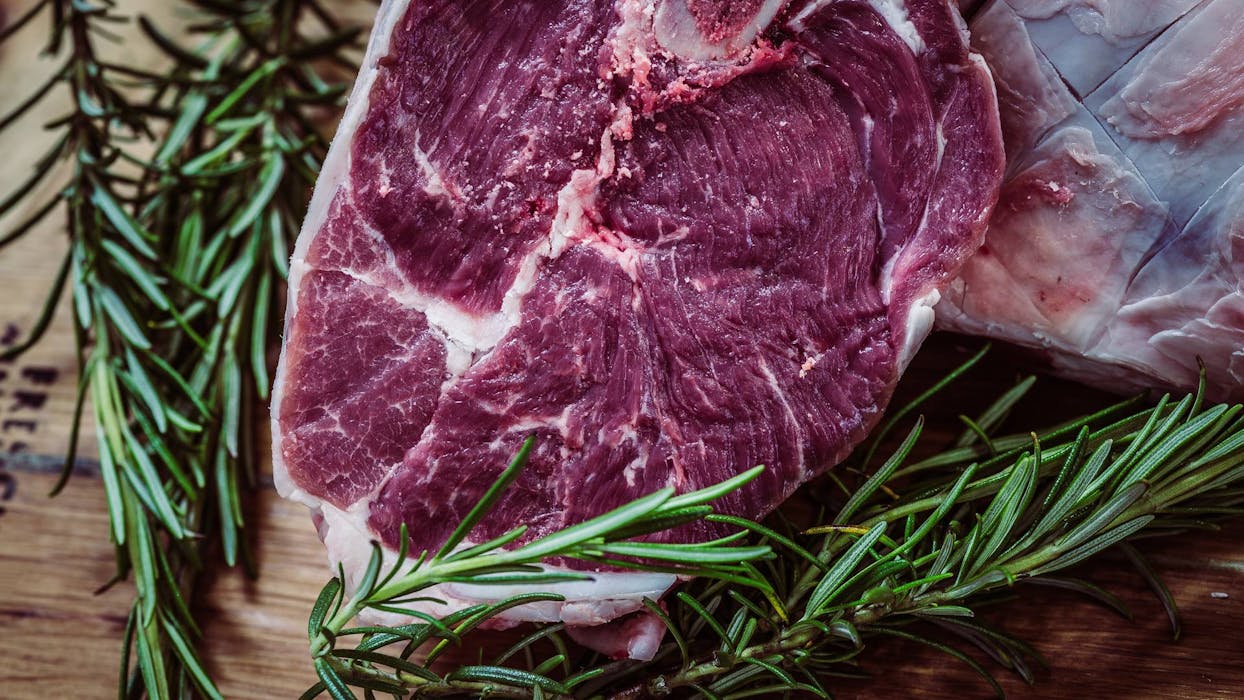
For most of human history, the preparation of food has been a focal point for culture. The complex and unique foodways of different nations and ethnic groups have been handed down from generation to generation, evolving alongside trade networks, agricultural exchanges, and large scale migrations of people from one part of the globe to another.
Contemporary North American foodways are drawn from hundreds of distinct cultures and incorporate thousands of ingredients from around the world. But while we have access to more kinds of food from more parts of the globe than ever before, this very abundance can be an obstacle to young people who want to learn to cook for themselves.
How do you know which products to buy, and how to shop for them? What are the differences between cuts of meat, and how do these differences lend themselves to different methods of preparation and cooking? Which spices should you have in your spice cabinet?
Given that most Canadian young people today were not raised in a strong food culture where recipes and techniques have been handed down to them from their parents and grandparents, providing a basic introduction to the staple cuts of meat that everyone should have in their freezer is essential knowledge for budding home chefs.
Why You Should Cook at Home this Summer
Before diving into the question of what meats you should have on hand, however, it may be worthwhile to present some of the arguments for why you should be cooking at home in the first place. After all, in cities like Ottawa, Toronto, Calgary, Edmonton, Victoria, and Vancouver, there is no shortage of healthy, fast options for health-conscious people on the go — does cooking at home really offer significant benefits?
According to the Canadian Food Guide, cooking at home can help you save money and eat more healthily. Not only does this help you afford more in the short term, a balanced diet is one of the best ways to be proactive about your overall health, which ensures you will be sick less often.
But if you are going to take up cooking, you will need more than just the will to do so: there’s a reason eating out is so popular, and if you actually want to make this lifestyle change, you’ll need to adjust how you do things. For example, if you ask a busy urbanite why they eat out so much, and they will likely tell you its simply a matter of time: cooking takes time, preparing the food takes time, and shopping for groceries definitely takes time.
If you’re having a hard time finding space in your day for the work and social commitments you already have, how on earth are you going to find an extra hour to make a home-cooked meal? One of the things that gives modern city-dwellers an advantage when it comes to cooking more of their food at home is the fact that it is easier than it has ever been to skip the shopping.
There are a growing number of fresh grocery delivery programs in Canada’s largest cities, and through truLOCAL, you can order gourmet meat online — meaning that all the ingredients you need are waiting for you when you get home after a long day’s work.
If you’ve been considering a diet that includes more home-cooked meals, why not use the slower pace of summer life as an opportunity to improve your cooking skills and get more adventurous in the kitchen? Not only will cooking your own food help you achieve that perfect swimsuit body, but it is also a rewarding exercise in its own right.
To help you get started, here are the five staple cuts of meat you should make sure you have in your freezer at all times if you want to develop your culinary skills and transition to a diet based on home cooking.
Whole Chickens
If you are like most people, when it comes to cooking chicken, your instinct is to go for chicken breasts or thighs, products that can be prepped and cooked quickly and easily. While it can be worthwhile for beginners to purchase cuts they know they’ll be likely to use, you should include a whole chicken in your next quick delivery of frozen meat orders if you really want to take your cooking to the next level.
Why is that? For the simple reason, that whole chickens give you an expanded range of cooking options. Using a whole chicken may not be as fast as frying up chicken breast or roasting a thigh, but it gives you the opportunity to either separate the chicken into parts (wings, thighs, breasts, etc), or to roast it whole.
A whole roast chicken, basted in a tasty lemon butter, can, in turn, yield food for days—shredded white or dark meat can be used in salads, enchiladas, and sandwiches, and the bones and carcass can be used to extract stock for soups and stews.
If you approach cooking with an eye to getting as many meals out of a single cut of meat as possible, then a whole chicken actually provides you with a great opportunity to invest the time in prepping and roasting the bird on the weekend, and then incorporating the meat into meals throughout the week.
Grass Fed Steaks
Who doesn’t love a good steak in the summer?
Steak is famous for being one of the tastiest cuts of beef, and also one of the easiest for first-time chefs to master. This means you can get premium ribeye meat sent to your door on one day, and have it defrosted and ready for the grill by the next evening. Add some salt and a little pepper, slap it over the coals or in buttered cast iron pan, and within a few minutes you can sit down to a delicious steak cooked exactly as you like it.
But steak can be as simple or as complicated as you want to be, and depending on what kind of steak you get, there are potentially dozens of different flavours to explore. If you love full-flavour striploin with a lot of character, you can taste the difference with grass fed beef steaks from livestock raised purely on a diet of pasturage.
Grass fed beef is a lot leaner than grain finished beef, which makes it a perfect choice for people who love red meat but are being careful about their fat intake. And because grass fed beef is rich in healthy omega-3 fatty acids, eating it can be a great way to enjoy more heart-healthy beef (for more information on grass fed beef nutritional value you can click here).
Steak is a great meat to have on hand because, unlike a roast chicken which takes a lot of planning and preparation time, it can be cooked quickly. When you get home exhausted at the end of a long day of work and just want something fast and tasty, steak is something you can sink your teeth into within ten to fifteen minutes of opening the fridge.
Bacon
No list of classic meat cuts would be complete if it didn’t include bacon. A versatile staple that can play a starring role in breakfast, lunch or dinner, bacon’s unique properties make it a useful thing to have in your freezer.
Bacon comes from the belly of the pig, but it is distinct from the broader culinary term “pork belly.” The meat we know as bacon in Canada is simply a particular way of preparing pork belly, and it is distinguished by the fact that it most bacon is cured, smoked, and sliced before packaging. If you are a fan of Italian cuisine, you are probably familiar with a slightly different kind of bacon, pancetta, which is cured with salt and spices by not smoked.
While bacon can take on a variety of different flavours from the spices used in curing it and the wood used to smoke it, but what really sets bacon apart from other meats is its fat content. Bacon gets its distinctive appearance from its long alternating layers of fat and muscle, and this fat produces drippings in the pan when cooked.
Cooked bacon can be used for everything from club sandwiches to morning fry-ups, and because its fat produces drippings when cooked, bacon grease can be a tasty fat to use in other dishes. Bacon can also play a back-up role when combined with other meats, as for example happens when it is used for barding and larding beef to ensure it doesn’t dry out.
Pork Chops
Pork chops are comfort food for a lot of people, but they are also a great staple meat to have in your home, for a variety of reasons. Like steak, pork chops can be cooked and served within a few minutes, if you’re in a hurry, but they can also serve as the basis for a wide range of different dishes.
Because pork doesn’t have the same strong flavour profile that beef has, it can take on a lot of different flavours from the food it is cooked with. While pan-fried or barbecued pork chops can provide a quick snack if you’re on the run, breaded or baked pork chops are a great option if you are looking for a low-cost meal rich in flavour.
Pork chops really shine when they are cooked in a crock pot, however, as this preserves the juiciness of the meat and delivers a melt-in-your-mouth tenderness. While most pulled-pork recipes use pork shoulder or a larger cut of that kind, it is possible to slow cook pork chops in barbecue sauce if you want to make an old-fashioned pulled pork sandwich without having to buy a whole roast.
Ground Beef
Last, but certainly not least, you should always make sure you have some frozen ground beef in your freezer. While it isn’t a marquee item like bacon or steak, ground beef is a solid, reliable foundation for a whole host of different dishes, and is a staple for cuisines from the Middle East to Mexico and everywhere in between.
Ground beef can be the basic ingredient in kebabs, meatballs, burgers, and Salisbury steaks, and can be cooked loose in Bolognese and other tomato sauces. High-quality ground beef sourced from sustainable, local farms anchors a meal, and whether you buy grass fed or grain finished ground beef, the possibilities for flavour combinations are endless.
The Advantage of Shopping at truLOCAL
Clearly, having these five types of meat readily available means having a huge variety of options when it comes to cooking every night of the week. And when it comes to sourcing them, truLOCAL is the single best way of making sure you have a steady supply of high-quality meat. Not only do we offer a huge line of products in addition to our staple offerings, we only work with local farmers and providers who are committed to sustainable practices.
No matter where you live in British Columbia, Alberta, or Ontario, premium truLOCAL beef, pork, poultry, and fish is only a few clicks away. You can select a single-time delivery, or you can set up a subscription that will ensure you get a fresh box of meat every two weeks, three weeks, or monthly.
We deliver to houses, apartments, gyms, and offices, and you don’t even have to be home to receive your order: because we deliver all of our food in delivery boxes packed with dry ice, your meat box will stay cold all day.
If you want to make the jump to home cooking this summer but aren’t sure you have time to do the shopping, never fear: truLOCAL has your back. Get in touch to find out how you can start stocking your freezer today!
Posted on
July 14th, 2021







